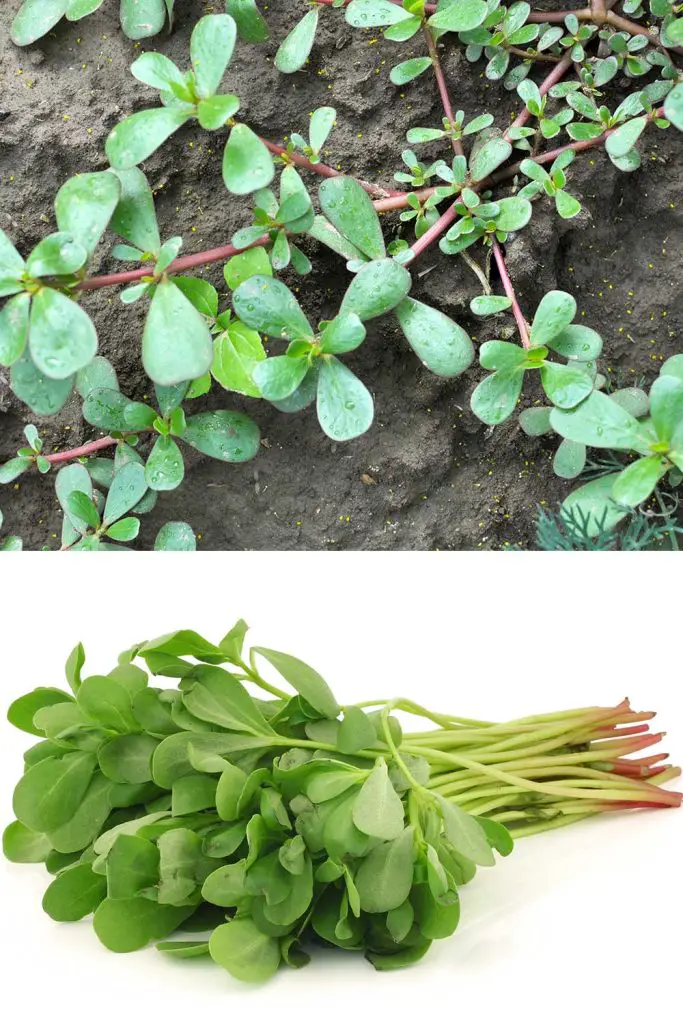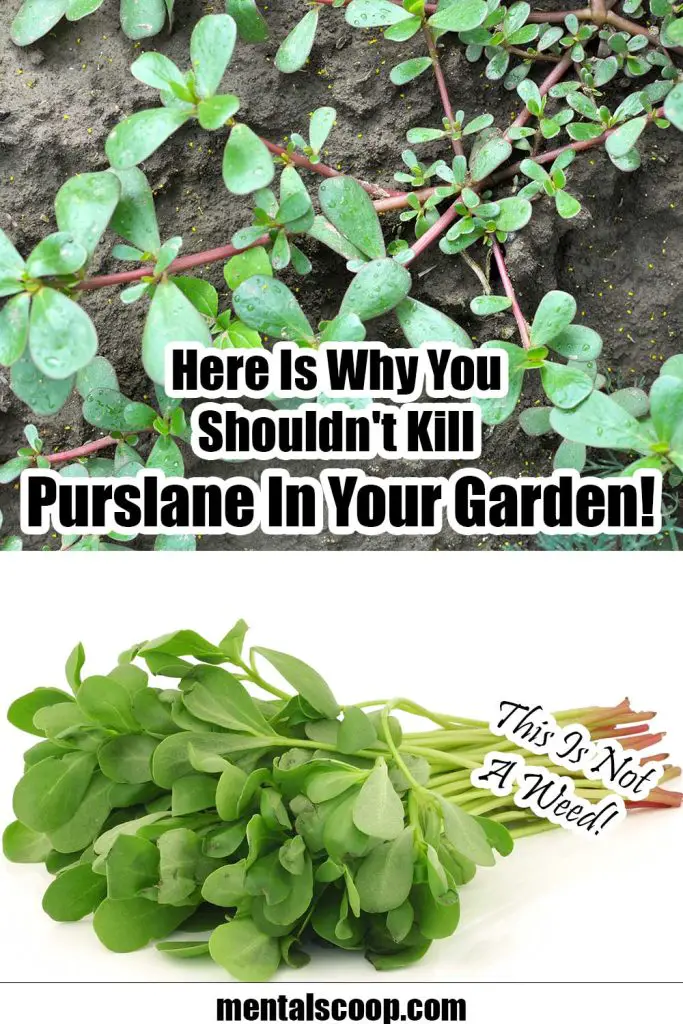Here Is Why You Shouldn’t Kill Purslane In Your Garden!

In the world of gardening, some plants are cherished for their beauty and others despised as weeds. Purslane (Portulaca oleracea) often falls into the latter category, but it’s time to reconsider this humble plant.
Purslane boasts an array of benefits that can not only enhance your garden but also contribute to your well-being and culinary adventures. In this article, we’ll take a closer look at why you should welcome purslane into your garden with open arms and how to make the most of its potential.
Nutritional Powerhouse: A Bounty of Vitamins and Minerals
Purslane is a true nutritional gem. It’s loaded with vitamins and minerals that can boost your health. Among its notable nutritional components are:
- Vitamins: Purslane is particularly rich in vitamin C, vitamin A, and several B vitamins. Vitamin C is essential for a healthy immune system and skin, while vitamin A supports vision and overall well-being. The B vitamins in purslane contribute to various bodily functions, including energy metabolism.
- Minerals: This unassuming plant also provides essential minerals such as calcium, magnesium, and potassium. Calcium supports bone health, magnesium plays a role in muscle and nerve function, and potassium helps maintain proper heart function.
Edible Delight: From Garden to Table
One of the most compelling reasons to cultivate purslane in your garden is its edibility. The tender, succulent leaves of purslane have a mild, slightly tangy flavor and a satisfying crunch, making them an excellent addition to your culinary repertoire. Here are some delightful ways to enjoy purslane in your meals:
- Salads: Harvest young purslane leaves and toss them into your salads for added texture and flavor. Their crispness pairs well with various greens and vegetables.
- Sandwiches: Add a layer of fresh purslane leaves to your sandwiches to impart a refreshing crunch and a hint of tanginess.
- Smoothies: Blend purslane leaves into your morning smoothie for a nutritional boost. The mild flavor of purslane won’t overpower the other ingredients.
- Stir-Fries and Sautéed Dishes: Consider lightly sautéing purslane with garlic and olive oil as a side dish or incorporating it into stir-fries for a unique twist.
Medicinal Uses: An Herbal Ally
Beyond its culinary merits, purslane has a long history of use in traditional medicine systems. It has been employed to address various health concerns, including:
- Digestive Issues: Purslane has been used to soothe digestive discomfort, making it a potential remedy for indigestion and upset stomach.
- Anti-Inflammatory Properties: Some studies suggest that purslane possesses anti-inflammatory properties due to its high antioxidant content. This quality could make it beneficial for individuals dealing with inflammation-related health issues.
- Skin Conditions: Purslane has been used topically to alleviate skin irritations and promote skin health. Its antioxidant and anti-inflammatory properties may contribute to its potential benefits for the skin.
Drought Tolerance: Thriving in Challenging Conditions
Gardening can be a daunting task, especially in regions with water scarcity. Purslane, however, is a resilient plant that thrives in adverse conditions. Here’s why it’s a valuable addition to gardens in arid regions:
- Drought Tolerance: Purslane’s adaptability to dry spells means you can maintain a thriving garden even when water is scarce.
Soil Improvement: A Gardener’s Helper
Purslane doesn’t just enhance your culinary delights; it also improves your garden’s soil. Here’s how:
- Deep Roots: Purslane’s deep-reaching roots help break up compacted soil, allowing better water penetration and air circulation. This improves overall soil structure and health.
- Natural Weed Suppression: As purslane grows and spreads, it acts as a natural barrier against other weeds, reducing the need for chemical herbicides and manual weeding.
Wildlife Attraction: A Haven for Pollinators and Wildlife
Gardens thrive when they attract beneficial insects and wildlife, and purslane can play a role in fostering biodiversity. Here’s how:
- Pollinator Magnet: Purslane produces small, bright yellow flowers that beckon pollinators like bees and butterflies. These tiny blooms are essential for the reproduction of many plants in your garden.
- Wildlife Food Source: The seeds and foliage of purslane can also serve as a food source for certain birds and wildlife, further contributing to local biodiversity.
Low Maintenance: A Gardener’s Dream
Time and effort are precious commodities for gardeners. Fortunately, purslane is a low-maintenance addition to your garden that can help you save both:
- Self-Seeding: Once purslane establishes itself in your garden, it often self-seeds and spreads, reducing the need for replanting.
- Weed Suppression: Purslane’s ability to suppress other weeds means less time spent battling unwanted plants.
High in Omega-3 Fatty Acids: Heart-Healthy Benefits
Purslane stands out among leafy greens as a significant source of omega-3 fatty acids, particularly alpha-linolenic acid (ALA). Here’s why this matters for your health:
- Heart Health: Omega-3 fatty acids are renowned for their heart-protective benefits. ALA, found in purslane, plays a role in reducing the risk of cardiovascular diseases.
Anti-Inflammatory Properties: Calming the Body
Inflammation is at the root of many chronic health issues. Purslane’s potential anti-inflammatory properties can offer relief:
- Antioxidant-Rich: Purslane boasts a high antioxidant content, which can help combat oxidative stress and reduce inflammation in the body.
Rich Source of Minerals: Supporting Overall Health
In addition to vitamins, purslane provides essential minerals that contribute to your well-being:
- Calcium: Purslane is a source of calcium, essential for maintaining strong bones and teeth.
- Magnesium: This mineral is crucial for muscle and nerve function, and it plays a role in various biochemical reactions in the body.
- Potassium: Purslane contains potassium, which helps regulate fluid balance, muscle contractions, and nerve signals, supporting overall health.
Aids in Weight Management: A Satisfying Addition
Maintaining a healthy weight is a goal for many, and purslane can be a valuable ally:
- Dietary Fiber: The fiber content in purslane can help you feel full and satisfied, potentially reducing overeating and supporting weight management.
Skin Health: A Natural Skin Soother
Purslane isn’t just beneficial internally; it has potential benefits for your skin:
- Topical Application: Some cultures have used purslane topically to soothe skin irritations and promote skin health. Its antioxidant and anti-inflammatory properties may contribute to these benefits.
Free and Sustainable Food Source: A Garden Bounty
In a world where access to fresh, healthy food can be a challenge, purslane offers a sustainable solution:
- Accessible and Economical: Allowing purslane to grow in your garden provides you with a free, readily available food source. This can be particularly valuable in times of food scarcity or economic hardship.
Companion Planting: A Natural Pest Deterrent
Purslane has another trick up its sleeve—it can act as a natural companion plant to benefit your garden:
- Pest Deterrent: The presence of purslane in your garden may discourage the growth of other unwanted weeds and provide a natural barrier against certain insects, reducing the need for chemical pesticides.

More interesting articles you may be interested in reading:

How To Remove A Tree Stump Painlessly
10 Vital Home Maintenance Tasks You’ll Regret If You Forget
See How Much Propane Is Left In A Tank With No Gauge
Thanks for reading and be sure to share this info with your friends using the social share buttons below.
Talking about social stuff, consider liking our Facebook page to keep up to date with our articles. Check out our other articles for more mental scoops!
